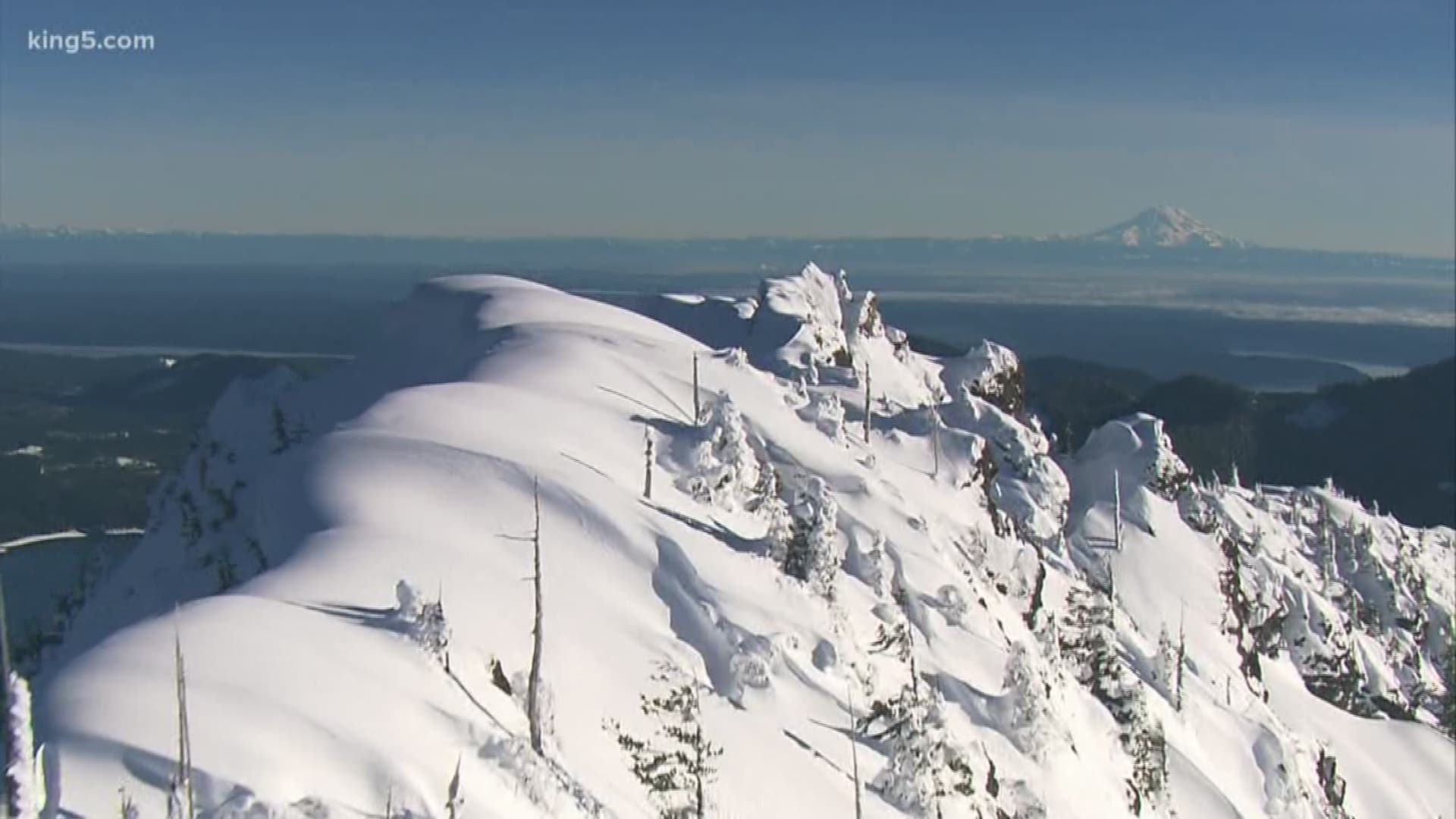A mountainside frosted in un-tracked snow is the siren's call of skiers and snowboarders, but the temptation to go out into that terrain can hide the danger below it.
KING 5 Meteorologist Rich Marriott is the co-founder of the Northwest Avalanche Center (NWAC). Since it's opening in the mid-70s, he's noticed more people are traveling into avalanche-prone territory as winter sports grow in popularity and equipment gets more capable of handling deep snow.
"When you get into the backcountry, there's no one protecting you," Rich said.
The backcountry is anywhere outside of a ski area where avalanche dangers are mitigated. Ski patrol goes out early in the morning, sets dynamite charges to shake any loose snow down the mountain, and if there's still a danger, they will close specific areas of the mountain.
When you're in backcountry, there are no controls. You are the one making the calls on safety. There are backcountry areas in Washington that are accessible from inside ski areas, like Tunnel Creek, which is an area accessible from within the bounds of Stevens Pass. An avalanche there in 2012 took the lives of three experienced skiers.
Equipment like wider skis and "skins" (strips of material that add traction to the bottom of your skis for uphill travel) and split snowboards make accessing backcountry terrain without the help of a ski lift possible as well.
It is factors like these that have made the search for untouched snow more popular and more attainable. Rich said that has also caused more avalanches. This also applies to snowmobilers, snowshoers and anyone traveling through winter backcountry.
"You have more and more people going out so you have more and more chances for people to have accidents or be involved in slides," he said.
An "accident" in this case is an avalanche that someone or some people get swept up into. Some survive, some do not.
When it comes to more people going out in the backcountry, it's a matter of statistics.
"If there's only one spot that’s unstable if you throw enough people out there, somebody's going to find that one spot," Rich said.
If you look at NWAC data over the past 30 years, there's been a steady increase in the number of avalanche fatalities in the United States. In 1989-1990, there were eight deaths. Last winter, there were 25 deaths. That number is down from the high in 2010-2011 of 36.
"We hover between 25 to 30 avalanche fatalities per year in the United States," said Scott Schell, NWAC executive director.
Schell credits a plateau in the number of deaths over the last few years to an increased interest in avalanche safety. However, with the number of people seeking waist-deep powder in the backcountry, he suggests more people get educated.
"As soon as you leave the area, you need a whole new lens that you're looking at that terrain and that snowpack through than when you were in that ski area, where other people are controlling your risks," he said.
A good place to start is an avalanche awareness course. Typically, they are around 90 minutes, many are free.
There are other more in-depth courses, like those offered by Washington's Pro Guiding or NWAC, that offer field experience.
Ski gear is already expensive, but Schell says that if you're going in backcountry conditions, there are three essential pieces of equipment: a beacon, probe, and shovel.
A beacon tells rescuers where you are and where a lost skier is who might be buried in snow. A probe is a long, collapsible measuring stick that can pinpoint where a person is buried and how much debris is on top of them. A shovel can get your friends out safely.
The beacon is the only tool for your own safety, the others are like getting the flu shot as a healthy adult -- it's for the protection of those around you.
"In uncontrolled avalanche terrain, everyone should have these three pieces in their group, and if a single person is missing one piece, you should avoid avalanche terrain," said Schell.
There's a streamlined technique to using all of these tools as efficiently as possible, as time is of the essence in an avalanche rescue. A person swept up in an accident can suffer trauma from hitting obstacles like trees or boulders. If the person survives that, they can suffer from asphyxiation under the snow or from breathing in their own expelled CO, resulting in carbon monoxide poisoning. Getting a person out in the shortest amount of time is life or death.
In an avalanche rescue class, you learn how to use that equipment properly.
"By itself, it is not going to save you, you need the proper training," said Schell.
Those three pieces of equipment together, however, can run you upwards of $400. So can a more intense avalanche class. After dropping hundreds on skis, a snowboard and bindings, it seems like a lot.
But how much is your life and the life of your friends worth?
"When you think about not coming back, it seems like a pretty small expense," said Schell.
Another necessity -- checking the forecast and knowing what the avalanche danger is. NWAC has a colored ranking system right on its homepage that can give you an idea of what the conditions are before you head to the mountain.
One more thing to have in your toolbox -- intuition, and knowing when to call it a day.
The feeling of floating in powder underneath one plank or two is an undeniably incredible feeling, but it's a feeling that will happen on days that are more safe than others. Rich Marriott says it is always worth waiting for.
"It's just like climbing a mountain: getting to the top is optional. Getting the bottom is mandatory, so you don't want to go out and make decisions that don't give you a chance to go back and do it another day." Rich said.

